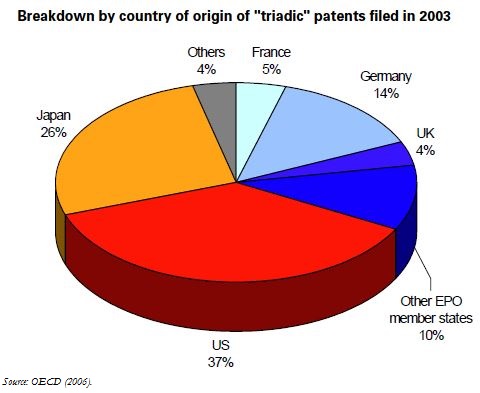Trésor-Economics No. 9 - The patent system in Europe
Several reports published in recent years have highlighted the gap that has opened up between Europe (notably France) and the United States in terms of the number of patents filed. Taking the number of "triadic patents" (filed simultaneously in the United States, Japan and with the European Patent Office), the European Union (EU) filed 35 patents per million head of population versus 66 in the United States and 106 in Japan. Differences between various patent systems are one factor, among others, accounting for this gap: the European patent, in particular, is deemed unduly costly and is accused of inhibiting innovation in Europe.
Here we review these countries' respective performances against a series of patent-related indicators in order to identify reasons for this gap and assess the likely gains to be expected from possible improvements to the European system. This approach is based on economics and does not take into account other factors such as national languages protection.
The difference between patent-filing ratios for Europe and the United States is entirely due, in the first place, to lower R&D spending in the EU and not to lower patent productivity for a given level of R&D spending.
Even so, the existing European patent system could be made more efficient. It has two major defects, namely the need to translate patents into all of the languages concerned, which raises the cost of the patent, and above all the profusion of administrative and legal formalities to be performed in the different countries once the patent has been granted.
Additional proposals have been made with a view to remedying each of these defects. The London Agreement of 2000 would drastically reduce the translation obligations, and the "Community patent" proposed by the European Commission in 1975 would significantly improve the protection afforded to patents by automatically covering the entire territory of the EU. By enabling innovative firms to release additional funds and/or affording them greater protection for their innovations, changes such as these could provide a stimulus to R&D in Europe.
